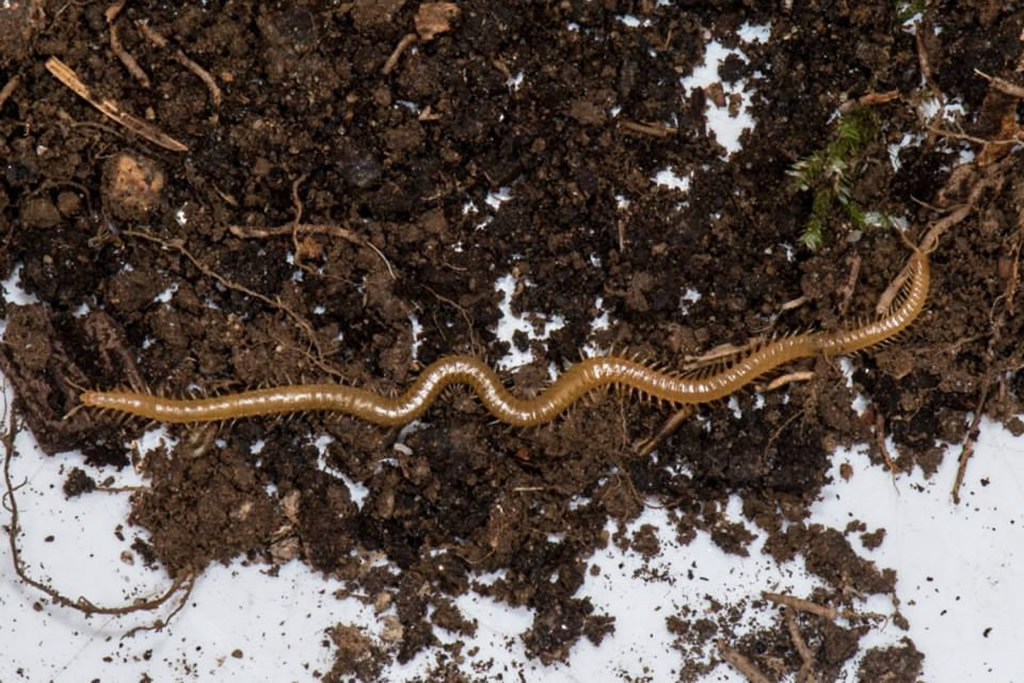Stigmatogaster souletinus Brölemann, 1907
Synonyms
- Haplophilus souletinus Brölemann, 1907
- Nesoporogaster souletina (Brölemann, 1907)
- Nesoporogaster souletina brevior (Eason, 1962)
Status:
- GB IUCN status: Near Threatened
- GB rarity status: Nationally Rare
ID Difficulty
Identification
Stigmatogaster (formerly known as Haplophilus) are large (reaching 70 mm, or more, in length) yellowish-brown centipedes, recognised by the combination of a very large number of leg pairs and numerous coxal pores that are easily visible over the ventral and dorsal surfaces of the coxae of the last legs.
Stigmatogaster souletinus is of the same general appearance as the common Stigmatogaster subterraneus, but has more leg pairs (93 to 101 pairs). No other British or Irish centipede approaches this total.
More information to allow accurate identification is given in the published identification keys by Tony Barber (2008 & 2009).
Distribution
First found by Ted Eason in 1960, since 1998 Stigmatogaster souletinus has been found in a handful of sites in a small area of Cornwall (around Falmouth).
Habitat
The few known sites are typically woodland or ornamental gardens. Specimens can be found under stones, deadwood and among leaf-litter.
This account is based on that in the 'Centipede Atlas' (Barber, 2022).
References
Barber, A.D. (2022) Atlas of the centipedes of Britain and Ireland. Telford, FSC Publications
Links
ChiloBase 2.0 - World Catalogue of Centipedes: https://chilobase.biologia.unipd.it/searches/result_species/4097




